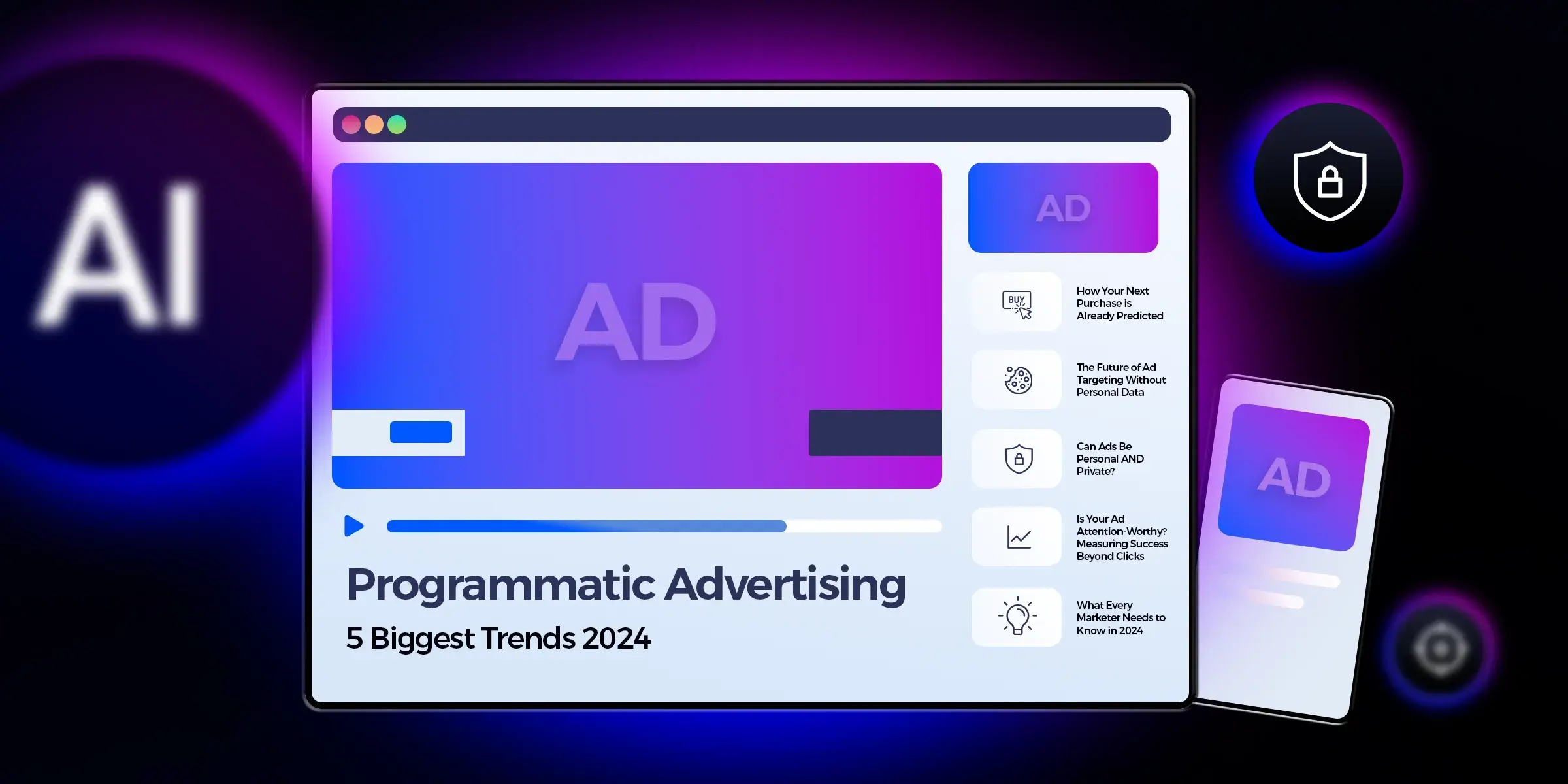Connected TV or CTV as it is commonly referred to is the integration of internet-connected features into traditional television sets which give users access to a variety of online content and services without having to leave their own homes. The use of connected televisions has become increasingly popular in recent years, with more consumers looking for ways to access entertainment options that go beyond traditional cable or satellite TV services.
One of the key benefits of Connected TV is the availability of built-in apps and features that make it a far more convenient and cost-effective option for consumers. Connected televisions provide consumers the opportunity to engage in a variety of entertainment options within the one device. Whether it’s the ability to stream content from a variety of the popular platforms such as Netflix, Hulu, and Amazon Prime Video or the option to use the same device to access social media platforms, web browsers, and other online services, CTV provides them with a variety of options to stay connected whilst watching TV.
The growth in usage of Connected TV has had a huge impact on the TV industry as a whole. Traditional TV can’t keep up with the constant stream of content that is available to CTV viewers on a consistent basis. This coupled with the flexible pricing options available to viewers has made it increasingly difficult for traditional broadcasters to retain viewership without adapting their model to the changing landscape by offering their own streaming services or partnering with existing platforms to offer their content to viewers online, according to Emarketer, the average American will ‘spend more time watching digital video than TV in 2024.
Considering these factors, it becomes abundantly clear that the surging prominence of connected TV not only offers viewers a myriad of options but also opens up new and exciting opportunities for content creators and advertisers alike. With more users turning to streaming services for their entertainment needs, there is a growing demand for original content that can be tailored specifically to these platforms. This has led to an increase in the production of original programming by online streaming services, whilst for advertisers it presents opportunities to use targeted advertising and data-driven insights to reach specific audiences.
The Benefits of CTV – What is in it for advertisers?
In the CTV landscape, advertisers have a unique chance to capitalise on the ever-growing popularity of the medium. There are numerous advantages that Connected TV advertising presents that Linear TV ads cannot. Advertisers using CTV have the ability to target specific audiences based on their interests, demographics, and key characteristics which provides an unprecedented level of precision and effectiveness whereas traditional TV advertising tends to be more broad-based. Connected TV empowers advertisers to deliver highly relevant messages to their intended viewers making it better for generating strong ROIs, but let’s take a closer look at why this is the case.
Expanded Reach
CTV allows advertisers to reach a vast and diverse audience that extends beyond traditional television viewership. With the rise of streaming services and smart TV adoption, CTV has become an integral part of consumers’ entertainment experience. By leveraging CTV advertising, brands can tap into this expanding viewership and engage with their target demographic on a larger scale.
Precise Targeting
One of the key advantages of CTV advertising is its ability to deliver precise audience targeting. Unlike traditional TV advertising, which relies on broad demographic segmentation, CTV enables marketers to leverage advanced data analytics and audience insights. This means that brands can deliver their messages to specific demographics, interests, and behaviours, ensuring that their ads are seen by the most relevant viewers.
Enhanced Engagement
CTV offers a more immersive and interactive viewing experience compared to traditional TV. With CTV, viewers have greater control over their content consumption, allowing them to choose what they want to watch and when. This engagement translates into a more receptive audience for advertisers. By delivering ads within a captivating and personalised environment, CTV enables brands to capture viewers’ attention and create meaningful connections.
Measurable Results
Unlike traditional TV advertising, which often lacks robust measurement capabilities, CTV provides advertisers with comprehensive analytics and performance metrics. Advertisers can track key metrics such as impressions, viewability, completion rates, and conversions, allowing for data-driven decision-making and optimisation. This level of transparency empowers brands to refine their campaigns and maximise their return on investment (ROI).
Cost Efficiency
CTV advertising offers cost efficiencies compared to traditional TV ads. With CTV, brands can target their ads specifically to their desired audience, eliminating wasted impressions and increasing the overall efficiency of their campaigns. Furthermore, CTV allows for flexible budget allocation, with options for both large-scale campaigns and more targeted, niche efforts, making it an attractive option for businesses of all sizes.
It goes without saying the benefits of CTV are clear: from expanded reach, precise targeting, enhanced engagement to measurable results, and cost efficiency. Marketers who choose to embrace CTV advertising, can stay ahead of the curve and effectively engage with their audiences in the evolving landscape of digital entertainment.
What does the future look like for CTV Advertising?
At the current pace of growth, CTV ad spend is expected to grow to 43.59 billion U.S. dollars by the end of 2026 in the US alone, for marketers looking to take advantage of this high performing marketing channel, you should! The future of CTV (Connected TV) advertising is bright and promising, as the technology advances and consumer viewing habits continue to shift towards streaming platforms, CTV advertising is expected to play an increasingly significant role in the advertising landscape. Here are some key aspects that shape the future of CTV advertising:
Growing Audience and Consumption
The audience for CTV is rapidly expanding as more households adopt smart TVs, streaming devices, and on-demand services. Viewers are embracing the convenience, flexibility, and personalised content offerings provided by CTV platforms. This provides advertisers with the opportunity to reach a larger and more diverse audience compared to traditional TV advertising.
Targeted and Data-Driven Advertising
CTV advertising offers enhanced targeting capabilities fueled by data-driven insights that can be acted on immediately to present your content to the ideal persona. Advertisers can leverage data on viewers’ demographics, interests, and behaviours to deliver highly targeted and relevant ads. This level of precision allows for improved campaign effectiveness, increased engagement, and higher return on ad spend.
Programmatic Advertising
Programmatic advertising is gaining momentum in the CTV space. Features such as Automated buying and selling of ad inventory enables advertisers to reach their desired audience more efficiently and at scale. Programmatic platforms leverage real-time data and advanced algorithms to optimise ad placements and ensure maximum ad relevance.
Advanced Ad Formats and Interactivity
CTV provides opportunities for advertisers to utilise more engaging and interactive ad formats. Advertisers can leverage features such as clickable overlays, interactive elements, and shoppable content to drive user engagement and conversions. These types of Interactive ads give viewers more options to directly engage with the content, which in turn enhances the overall ad experience.
Cross-Screen Advertising and Convergence
CTV advertising goes beyond the confines of the living room. As the rise of mobile and connected devices continues, advertisers can include their CTV campaigns in bigger omni channel campaigns that span multiple screens, including smartphones, tablets, and desktops. This cross-screen approach enables advertisers to maintain consistent messaging and reach viewers at various touch points throughout their digital journey.
Ad Measurement and Attribution
Measurement and attribution capabilities are evolving in the CTV space, allowing advertisers to assess the impact and effectiveness of their campaigns accurately. These Improved analytics and attribution models provide advertisers with a myriad of options to track viewer actions, attribute conversions, and gain valuable insights into campaign performance.
Partnerships and Content Integration
Collaborations between advertisers, content creators, and CTV platforms are growing in prevalence. As overt advertising continues to be met by scepticism by consumers, marketers can now explore opportunities for product placements, brand integrations, and sponsorships within CTV content. These partnerships facilitate seamless integration of ads into the overall viewer experience, ensuring a more cohesive and engaging advertising ecosystem as well as reducing the interruptive nature of ads for viewers.
Conclusion
In conclusion, as we see viewership shifting from linear TV to Video on Demand, there is a great opportunity for advertisers to take advantage of the various opportunities presented by CTV advertising. The future of CTV advertising presents a great number of exciting elements for those willing to take advantage, from continued audience growth, targeted and data-driven approaches, to interactive ad formats, cross-screen advertising, improved measurement, and strategic partnerships. Advertisers who embrace these trends and adapt their strategies to assess what role CTV can play in their marketing mix can effectively reach and engage consumers in the evolving CTV landscape, reaping the benefits of this dynamic and rapidly expanding advertising medium.
Want to get the latest insights in your inbox? Subscribe to our newsletter today!






